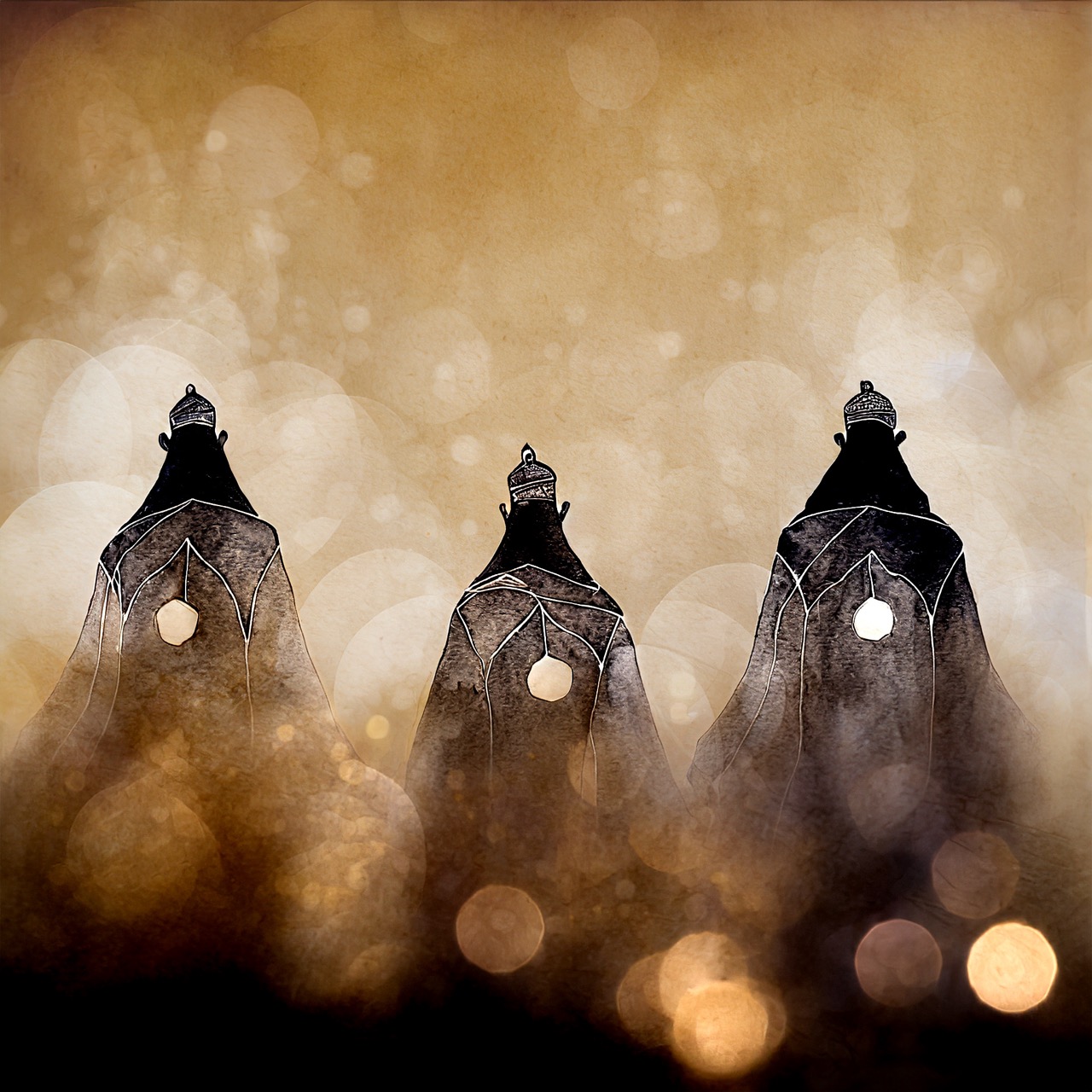Los Reyes Magos, conocidos también como los Magos de Oriente, son figuras centrales en la tradición cristiana, representando no sólo la adoración del niño Jesús sino también simbolizando un puente de paz y diplomacia entre culturas diversas. Esta introducción examina la representación y evolución de los Reyes Magos a lo largo de la historia en diferentes contextos culturales.
ORIGEN Y SIGNIFICADO
La historia de los Reyes Magos se encuentra en el Evangelio de Mateo, donde se describe su viaje para adorar a Jesús y ofrecerle regalos de oro, incienso y mirra. La fiesta de los Reyes Magos, comúnmente llamada «Epifanía», significa «manifestación», simbolizando la manifestación de Dios a los gentiles representada por los magos.
CELEBRACIÓN DEL DÍA DE REYES
El 6 de enero, conocido como el Día de Reyes, se celebra globalmente, conmemorando la adoración del Niño Jesús por parte de los tres Reyes Magos. Esta celebración varía en diferentes culturas, incluyendo actividades como la Cabalgata de Reyes Magos, que es especialmente popular en España, donde las calles se llenan de desfiles y actividades culturales [5].
SIMBOLISMO DE PAZ
Aunque no se menciona directamente en las fuentes consultadas, los Reyes Magos también pueden ser interpretados como símbolos de paz y unidad. Su viaje desde diferentes partes del mundo hacia un objetivo común refleja un mensaje de armonía y entendimiento entre diversas culturas y creencias.
The Magi, also known as the Wise Men of the East, are central figures in the Christian tradition, not only representing the worship of the Christ child, but also symbolising a bridge of peace and diplomacy between different cultures. This introduction examines the representation and evolution of the Magi throughout history in different cultural contexts.
ORIGIN AND MEANING
The story of the Magi is found in the Gospel of Matthew, which describes their journey to worship Jesus and offer him gifts of gold, frankincense and myrrh. The feast of the Magi, commonly known as Epiphany, means «manifestation» and symbolises the revelation of God to the Gentiles represented by the Magi.
EPIPHANY
6 January, known as Epiphany, is celebrated worldwide to commemorate the adoration of the baby Jesus by the three wise men. This celebration varies in different cultures, including activities such as the Epiphany Parade, which is particularly popular in Spain, where the streets are filled with parades and cultural activities [5].
SYMBOLISM OF PEACE
Although not directly mentioned in the sources consulted, the Three Kings can also be interpreted as symbols of peace and unity. Their journey from different parts of the world to a common destination reflects a message of harmony and understanding between different cultures and beliefs.
MIDDLE EAST IN ANTIQUITY
Representation in Christian Texts: The Magi are first described in the Gospel of Matthew, where their journey from the East to worship the infant Jesus is mentioned. Here, they symbolise the opening of Christianity to the Gentile world.
Interpretation in Islam: Although not mentioned directly in the Qur’an, similar figures appear in Islamic traditions, highlighting the connection and respect between the Abrahamic religions.
MEDIEVAL EUROPE
The World Health Organization’s (WHO) Arts and Health project Iconography and Art: The Magi became symbols of Christian unity and were depicted in numerous works of art, showing ethnic and cultural diversity.
Literature and Legends: Texts such as «The Golden Legend» expanded their stories, attributing diverse names and origins to them, reflecting European cultural integration.
SIMILAR FIGURES IN OTHER CULTURES
Three Wise Men of the East in Asia: Similar in concept to the Three Wise Men, they represent wisdom and the search for truth in various Eastern philosophies.
Ancestors in African Cultures: Figures revered for their wisdom and guidance, similar in their role of unifying and directing their communities.
REFLECTIONS
These international projects illustrate the significant impact that the arts can have on mental health. By providing a channel for self-expression, empowerment and healing, art becomes a window into a world where personal emotions and experiences can be understood and shared. At the Kripties Foundation, we recognise and value the crucial role that art plays in mental health and wellbeing, and we strive to support initiatives that bring these two vital fields together. By linking art and mental health, we not only improve the lives of individuals, but also enrich our culture and society.
| CulturE | FigurE | SYmbolism |
|---|---|---|
| CHRISTIAN | Wise Men | Unity, Peace, Diversity |
| ISLAMIC | Similar Wise Men | Religious connection |
| ASIAN | Three Wise Men | Search for Wisdom |
| AFRICAN | Ancestors | Guidance and Unity |
In every corner of the world where their story resonates, the Three Wise Men represent not only the magic and illusion of childhood, but also the spirit of human brotherhood. For children, who look at the world with eyes full of wonder and hope, these characters are a reminder that diversity is a treasure, not an obstacle. They teach us that wisdom, generosity and curiosity are universal values, capable of uniting people of all ages, races and religions.
So, in this age where unity is more necessary than ever, the story of the Magi invites us all, especially the youngest, to embark on our own journey of mutual understanding and acceptance. It encourages us to look beyond our borders, whether geographical, cultural or spiritual, and to discover that, at the heart of our shared humanity, we are all guided by the same stars of love, peace and hope.
🌐 Sources
- Textos Bíblicos: Evangelio de Mateo
- «La Leyenda Dorada» de Jacobo de Vorágine
- Tradiciones Islámicas y Literatura Asiática
- es.wikipedia.org – Reyes Magos
- ngenespanol.com – ¿Cuál es el origen de los tres Reyes Magos?
- historia.nationalgeographic.com.es – El origen de los Reyes Magos: ¿quiénes eran?
- diainternacionalde.com – Día de Reyes
- campamentos.info – Cabalgata de Reyes Magos 2024 en Madrid



